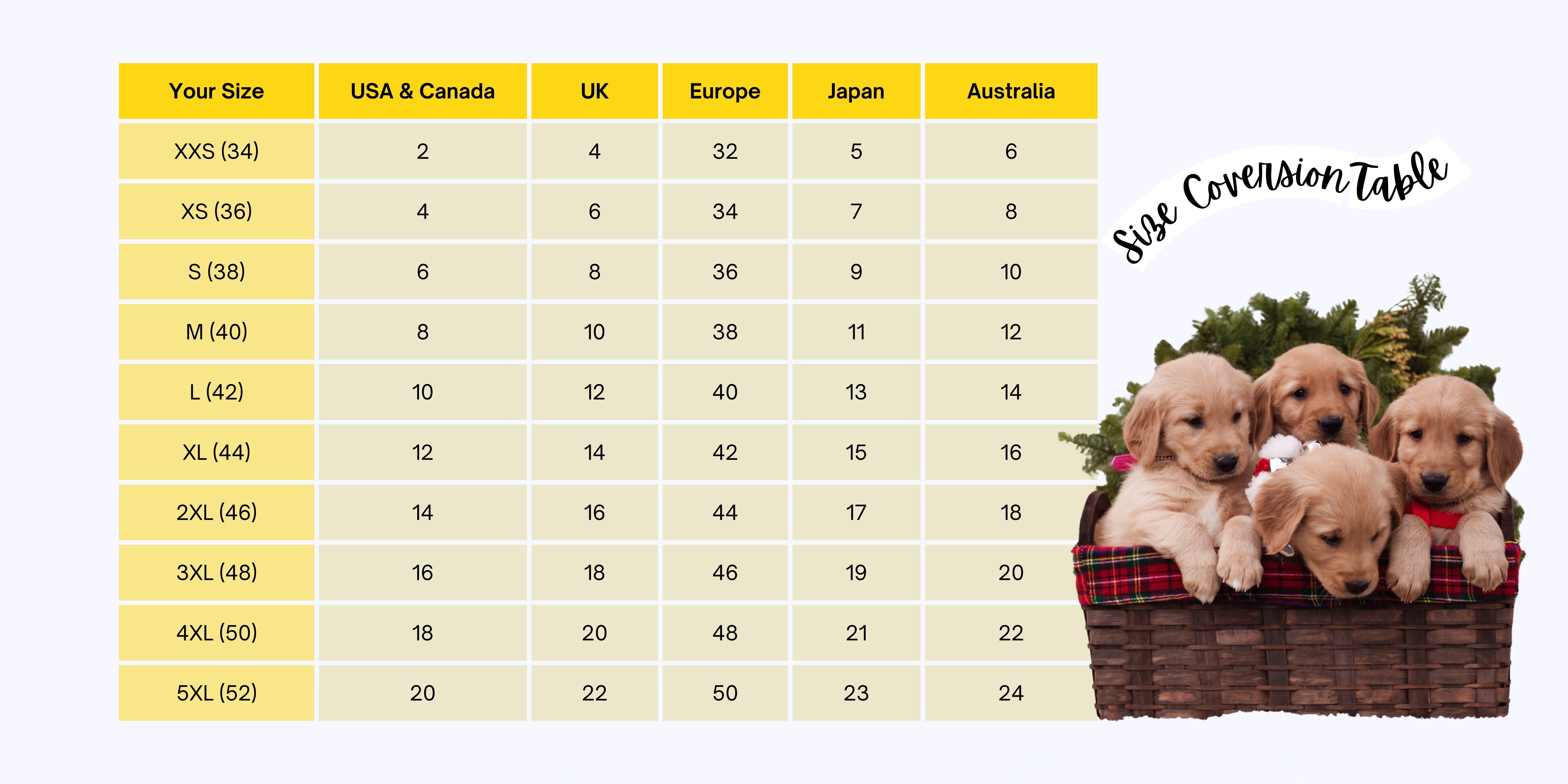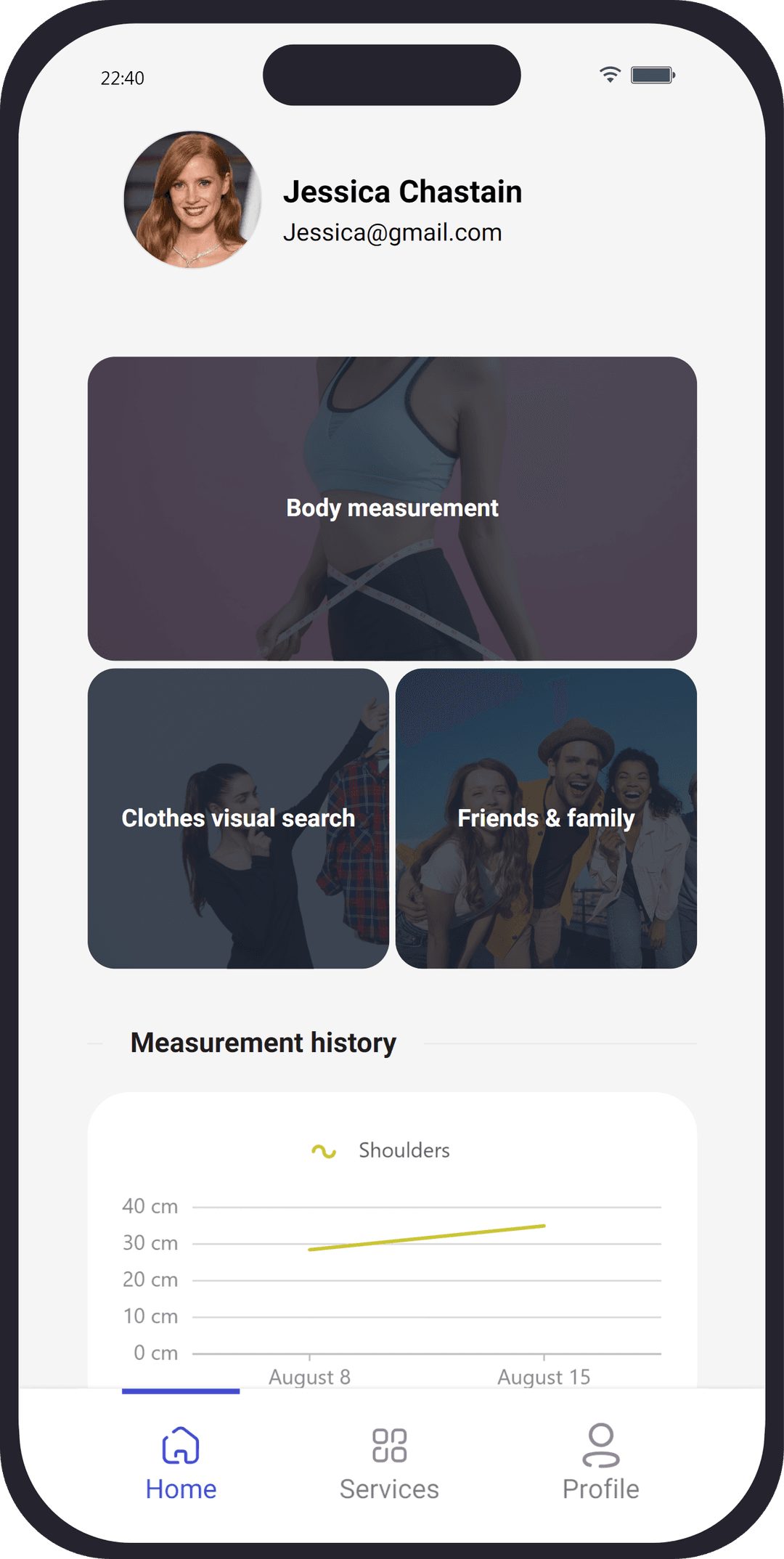
How To Find Your Size In Different Countries
Finding your accurate and exact size can sometimes feel like deciphering a secret code. Every country seems to have its unique approach to clothing sizes. Whether you're familiar with the UK's numeric sizing, the USA's starting point at size 2, or the number-based metric in European sizes, it can be a puzzling experience for those shopping across borders. Achieving that perfect fit in international shopping requires a deeper understanding of various size charts, conversion methods, and a touch of creativity to ensure you confidently select the right size, regardless of the part of the world you're shopping in. Let's decode this sizing mystery and guide you to shop confidently across different countries' sizing systems.
Shopping for clothes across different countries can be an exciting venture, but it comes with the challenge of navigating varying size standards. The struggle to find the perfect fit is not just about understanding one's own measurements; it's also about deciphering the diverse sizing metrics used worldwide. The quest to discover the ideal size becomes a global puzzle, particularly when different regions have their unique sizing systems, with the UK, the USA, and Europe being prominent examples.
In the United Kingdom, the prevalent sizing system follows the British metric. The UK sizing usually relies on numbers, starting typically from size 6 and going upwards. This system also incorporates the lettering of XS (Extra Small), S (Small), M (Medium), L (Large), XL (Extra Large), and beyond, which might provide a broader spectrum for sizing preferences.
Conversely, the United States has a sizing system that often starts from 0 or 2 and continues upwards. The US system might seem numerically lower than the UK, so a size 10 in the UK could correspond to a size 6 in the US.
For Europe, the metric most often used revolves around numbers that align more with specific measurements. This system follows centimeters and sometimes millimeters. It typically includes sizes 34, 36, 38, and so on, and also varies in its approach to standardizing sizes across countries on the continent.
Navigating these distinct sizing systems can be a perplexing task for international shoppers. Size conversion becomes essential to understand the correspondence between different countries' sizing units. To bridge these differences, various conversion charts are available online. These charts provide direct comparisons between UK, US, and European sizes. Shoppers can refer to these conversion charts to understand how a particular size in the UK relates to its equivalent in the US or Europe.
However, merely relying on a universal chart might not entirely solve the issue due to the discrepancies in each brand's interpretation of sizes. Therefore, it's recommended to use brand-specific size guides provided by clothing companies. These guides often present a more accurate and detailed conversion for their specific products, considering the brand's particular fitting patterns.
An additional helpful method is to understand one's measurements in inches or centimeters. This allows shoppers to precisely match their measurements against a brand's specific size guide, providing a more accurate fit irrespective of the country's sizing system. Customer reviews are also beneficial, as they often contain feedback on whether a particular item runs large or small, aiding fellow shoppers in selecting the right size.
Exploring sizing units from various countries requires a multi-faceted approach that combines understanding the different metrics, consulting conversion charts, relying on brand-specific sizing guides, and knowing one's measurements. The endeavor to find the perfect fit across different countries demands patience, some trial and error, and often, a flexible approach to sizing standards.
Understand Size Conversions
Understanding size conversions is pivotal when navigating the diverse sizing systems prevalent across countries. This process involves decoding the variations in size metrics, often presented in numerical or lettering systems, to find the most suitable fit. Size conversions are critical, especially for international shoppers, to ensure the right selection of clothing or footwear.
To execute size conversions effectively, it's essential to comprehend the underlying principle of matching sizes across different metrics. This involves recognizing the correlation between the varied numbering and lettering systems used in different countries and regions, such as the UK, the US, and Europe, and associating them with corresponding measurements in inches or centimeters.
Professional examples to execute size conversions can be approached through various methods. One of the most common and straightforward approaches is to utilize size conversion charts available online. These charts offer direct comparisons between different sizing metrics, enabling shoppers to swiftly identify what a size in the UK translates to in the US or European sizing. However, the reliance on a universal chart might not always resolve sizing discrepancies between various brands.
Another method is to employ brand-specific size guides provided by clothing companies or retailers. These guides offer more precise and tailored conversions for their particular products. They usually specify the brand's unique sizing patterns, allowing customers to better align their measurements with the most suitable size in that brand's products.
Additionally, understanding and measuring oneself in inches or centimeters is crucial. This enables shoppers to match their measurements with a brand's specific size guide for accurate fitting, disregarding the differences between countries' sizing systems. Knowing one's measurements provides a more direct and precise approach to selecting the right size, irrespective of the country's size metrics.
The process of size conversions should be approached with a multi-faceted strategy that involves the use of conversion charts, brand-specific size guides, and a clear understanding of personal measurements. This versatile approach can facilitate a more accurate and satisfactory shopping experience, irrespective of the diverse sizing metrics used across different regions and brands.

Use Conversion Charts
Conversion charts are indispensable tools, serving as a key reference for shoppers in deciphering the complexities of global sizing differences. These charts present a comparative breakdown of size metrics across various countries, including the UK, US, Europe, and others. They've become a quintessential part of the apparel industry, enabling customers to transcend geographical boundaries when purchasing clothing. Initially, conversion charts were primarily developed by multinational fashion brands or retailers operating across different regions to simplify sizing for their international clientele. They aimed to bridge the disparity between distinct sizing systems, aiding customers in accurately identifying their size across borders. However, today, these charts have evolved into widespread online resources, easily accessible for shoppers navigating the intricacies of international clothing sizes.
The utilization of conversion charts remains a prevalent practice among both in-store and online shoppers. In physical stores, customers often refer to these charts when buying apparel from international brands or when shopping in countries using a different sizing metric. Meanwhile, online shoppers rely heavily on these charts when purchasing garments from global e-commerce platforms, aiming to get a clearer idea of what a specific size translates to in their local sizing. The chart's significance lies in facilitating informed decision-making, ensuring that customers receive the right fit without the inconvenience of returns due to size mismatches. However, despite their practicality, conversion charts have certain limitations. They might not fully account for differences in clothing styles, fits, or variations between brands. Therefore, while they serve as a foundation for size estimation, they might not always guarantee a perfect fit, potentially leading to unsatisfactory purchases. This discrepancy sometimes poses challenges for customers, necessitating a balance between reliance on these charts and understanding the brand's specific sizing patterns for better accuracy.
Consult Brand Guides
"Consult Brand Guides" represents a crucial strategy for navigating size discrepancies in the world of fashion. Brand guides are comprehensive references provided by clothing manufacturers that detail their specific sizing standards. These guides serve as a direct source to understand the precise measurements and fitting details, making it easier for customers to select the most accurate size. They often feature specific measurements for various items like tops, bottoms, or dresses, guiding customers to identify the best-fitting clothing for their measurements. Searching for these guides is generally easy; most are available on the brands' official websites or within their stores.
Brands offer this resource to ensure customers make informed purchases and to diminish the chances of a size mismatch. For instance, some renowned companies like ASOS, Levi’s, or Nike provide online access to such guides, available for different regions and product categories. These resources are continuously updated to keep in line with changing trends and global standards. A historical angle to the brand guide concept dates back to the rise of ready-to-wear clothing in the 19th century. As garment manufacturing became standardized, the need for uniformity in sizing grew apparent. However, the lack of a universally agreed-upon sizing system led various manufacturers to develop their own brand-specific guides to maintain consistency and assist customers in finding their accurate fit.
Customers often face dilemmas concerning standard sizing, especially when purchasing internationally or trying new brands. The confusion arising from disparities between sizing metrics like UK, US, or European standards necessitates a reliable point of reference. Here, brand guides are invaluable, providing the exact measurements for each size, thus streamlining the shopping process. These guides empower shoppers to confidently select the correct size, reducing the hassle of returns and promoting a positive shopping experience.
Measurements Matter
In fashion, the phrase "Measurements Matter" embodies the fundamental concept of understanding one's body dimensions to find the perfect fit in clothing. It underlines the significance of comprehending individual body metrics to select the right size and style, aiding in the quest for the ideal garment. These metrics generally include a variety of dimensions like chest, waist, hip, and inseam measurements, integral in determining the correct fit for different articles of clothing.
Accurate measurements are the cornerstone of a successful shopping experience, particularly for online apparel purchases. Shoppers can attain reliable measurements using basic tools such as a measuring tape and, in some cases, assistance from another person. To accurately measure the chest, one should place the tape measure under the arms, across the shoulder blades, and wrap it around the fullest part of the chest. The waist measurement is taken by circling the waist with the measuring tape, ensuring it aligns comfortably without squeezing. To measure the hip, one would place the tape measure around the widest part of the hip, usually around 8 inches below the waistline. For inseam measurement, one measures from the crotch to the bottom of the ankle.
These measurements vary widely from brand to brand, especially in a global retail landscape where different companies adhere to distinct sizing standards. Understanding personal measurements and comparing them to a brand's sizing guide is pivotal in choosing the right fit. This approach ensures that the selected size corresponds more accurately to the individual's body shape and the specifications provided by the brand. Employing keywords strategically, including terms like "clothing measurements," "size guide," "accurate size selection," and "sizing standards," within the content significantly boosts search engine optimization and enhances page visibility for customers seeking guidance on accurate sizing. The emphasis on accurate measurements reaffirms their importance in simplifying the shopping process and reducing the likelihood of return due to improper fit.
Moreover, measurement matters not just for size accuracy but also for enhancing customer confidence in their choices. By understanding and utilizing the appropriate metrics, individuals can make more informed decisions, thus limiting dissatisfaction and enhancing the overall shopping experience. Investing time in understanding and recording one's precise measurements can transform the shopping experience into a more efficient, comfortable, and enjoyable activity.

Customer Reviews
Customer reviews stand as a beacon of guidance and assurance in the online shopping realm, offering invaluable insights that assist prospective buyers in their purchasing decisions. These reviews often contain personal experiences and honest feedback from shoppers who have previously bought and used the product. They are treasured for their candidness and practical details, shedding light on the actual quality, fit, and comfort level of an item.
E-commerce platforms, retailer websites, and social media channels are bustling with customer reviews. These sites facilitate a comprehensive array of comments, often covering different aspects of the product, including size accuracy, material quality, and overall satisfaction. Reading these reviews, especially those that explicitly mention the fit and sizing experience, can be incredibly enlightening when considering a clothing purchase. Keywords like "customer feedback," "product reviews," "size accuracy," and "fit reviews" bolster the optimization of content, enriching search engine visibility for customers seeking sizing advice based on fellow buyers' experiences.
The optimal time to dive into customer reviews varies but is especially beneficial when planning to purchase an item that necessitates specific fit considerations. Clothing items, footwear, and accessories often spark conversations around fit, as customers articulate how the garment fits concerning standard sizing or if it runs larger or smaller than expected. Additionally, reviews might also highlight alterations or adjustments required for a perfect fit.
Leveraging these reviews goes beyond understanding the fit; it's about discerning the overall buying experience. Often, comments may feature notes about the brand's consistency in sizing, the reliability of the size charts, or even insights into customer service concerning size exchanges or returns. These authentic assessments are instrumental in comprehending the nuances of fit, catering to different body types, and discerning the overall satisfaction levels of a brand's customer base.
Flexibility In Sizing
Flexibility in sizing denotes the adaptation and variance in the sizing structure of clothing across different brands and even within a brand's various collections. It represents a shift from rigid size charts to a more accommodating and versatile approach, acknowledging the diverse body shapes and sizes among customers.
Some notable brands like Athleta, Old Navy, and Universal Standard are heralding the trend of extended sizing options. Athleta, for instance, offers a wide range of activewear and sports clothing, ensuring inclusivity by providing various fits that cater to different body types. They've established extended sizing that goes beyond the standard options, acknowledging that one size doesn't fit all.
Old Navy has also embraced flexibility in sizing, introducing an extensive size range across its offerings, ensuring that most customers find clothing that caters to their unique measurements. With inclusivity at its core, Universal Standard represents an avant-garde brand offering apparel in a size range from 00 to 40, redefining fashion with an emphasis on individual body positivity and diversity.
The mechanism behind this flexibility largely revolves around the brands' willingness to invest in detailed research on sizing and fit, incorporating the opinions and experiences of diverse customers. It involves adjusting the size chart to be more accommodating and reflecting the actual sizes in a more realistic manner. This initiative allows for 'in between' sizes, addressing the typical challenges of the standard small, medium, large, and extra-large categories.
This flexibility is essentially about offering various fits to cater to different body shapes and preferences, promoting the idea that clothing should be adaptable to the person, not the other way around. It eliminates the limitations imposed by traditional sizing charts, aiming to create a more inclusive and accessible shopping experience.
By embracing flexibility in sizing, brands emphasize the empowerment of their consumers. This approach encourages individuals to focus less on the number on the tag and more on how the clothing fits and makes them feel. It's an approach that not only boosts confidence among customers but also fosters loyalty to brands that truly prioritize inclusivity. This inclusive sizing strategy, promoting adaptability and flexibility, ultimately translates to a positive shopping experience for a broader customer base.
Conclusion
In the intricate tapestry of the global fashion landscape, navigating the nuances of size standards from the UK, US, and Europe can be as challenging as solving a multi-dimensional puzzle. Size conversions act as the compass, guiding international shoppers through the maze of diverse numbering and lettering systems used in different countries. Tools like conversion charts and brand-specific size guides offer invaluable insights, bridging the gaps between varying metrics, yet they don't always capture the intricacies between brands. Pairing these guides with individual measurements—chest, waist, hip, and inseam—anchors the shopping experience in a more personalized and accurate manner, ensuring the right fit. Keywords emphasizing "clothing measurements" and "size guides" contribute to the content's search engine optimization, making it more accessible for buyers seeking precise sizing information.
Customer reviews are the unfiltered beacons guiding prospective buyers through the tumultuous seas of online shopping. These reviews, pulsating with candid feedback, provide comprehensive insights into size accuracy and fit. Words such as "customer feedback," "fit reviews," and "product reviews" enhance the content's visibility on search engines. The contemporary notion of flexibility in sizing represents a shift towards inclusivity, with brands like Athleta, Old Navy, and Universal Standard pioneering extended size ranges. This flexibility is about fitting the garment to the individual, not the other way around, accommodating diverse body shapes, and promoting empowerment among consumers.
This holistic approach to navigating sizing variations ensures a more informed and satisfactory shopping venture for buyers globally. It's not just about finding the right size; it's about acknowledging the diversity of body types, empowering individuals to make informed choices, and fostering a more inclusive and customer-centric fashion industry. The commitment to adapting to diverse sizes and catering to individual measurements resonates in the evolving landscape of fashion, ensuring that the clothes fit the person, no matter the size, region, or shopping platform.



